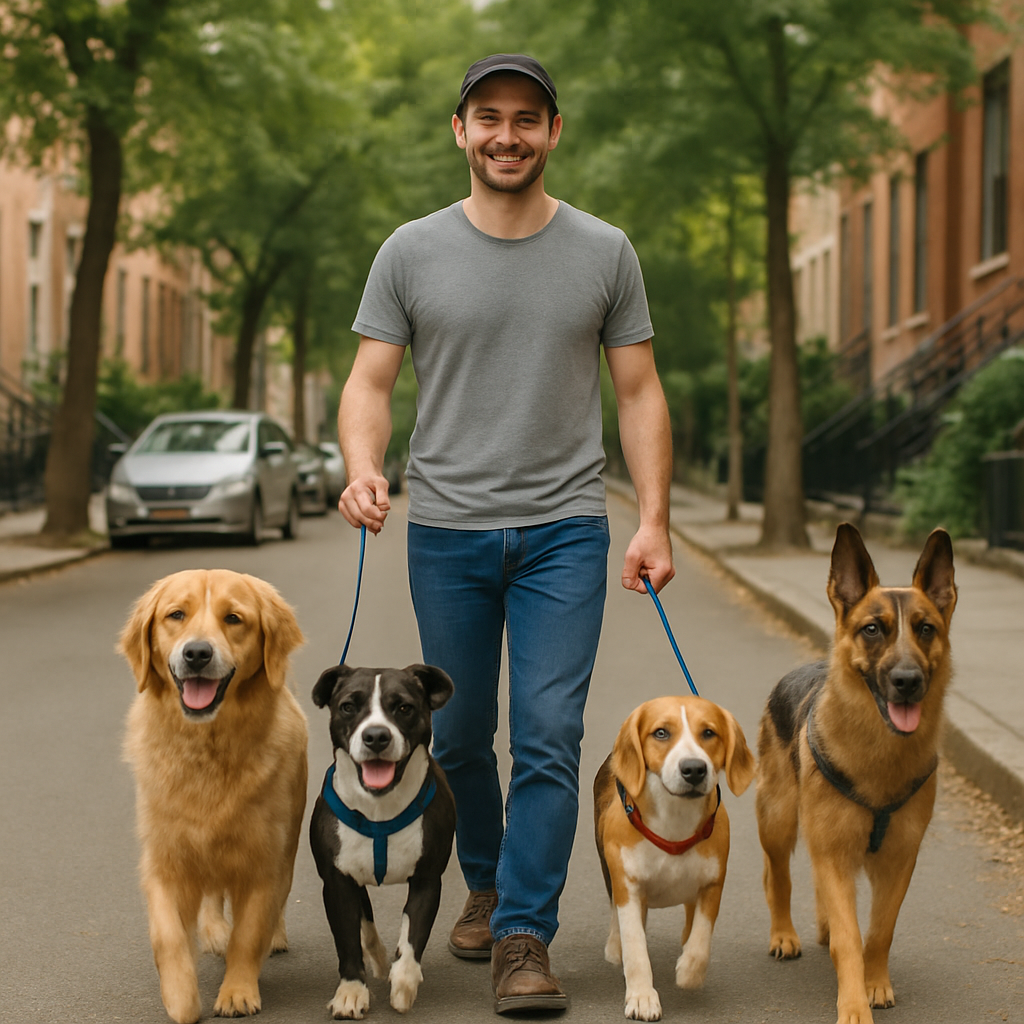How to Prevent Losing Your Dog While Pet Sitting?
By Lost'Him Team • February 21, 2025

Having a pet sitter take care of your dog can be a great solution when you're away, but it also carries a risk: the dog is in an unfamiliar environment and might try to escape.
Some dogs may feel stressed, anxious, or simply curious and attempt to flee to find their home. It is crucial to take precautions to prevent any escape and ensure the dog’s safety during their stay.
1. Choosing the Right Pet Sitter: A Crucial Step
👉 Selecting a Trustworthy Person
- Choose an experienced pet sitter who understands canine behavior.
- Check reviews and recommendations if they are a professional.
- Ensure they understand the dog’s needs: exercise, mental stimulation, and social interactions.
💡 A good pet sitter does more than feed a dog—they anticipate their reactions.
👉 Ensuring They Follow Safety Instructions
- A reliable pet sitter must be careful with doors and gates.
- They should know how to react in case of stress or escape.
- A good pet sitter will ask about the dog’s habits before the stay.
- It’s beneficial if they are familiar with Lost’Him for quick action in case of an emergency.
💡 If your dog tends to escape, choose a sitter with experience handling escape-prone dogs.
2. Introducing the Pet Sitter in Advance
👉 Schedule a Meeting Before the Stay
- Have the pet sitter visit your home so the dog associates them with a familiar setting.
- Go for a walk together to create a positive association.
- Bring the dog to the pet sitter’s home before the stay so they can explore the area and feel more comfortable.
💡 A dog familiar with their sitter and surroundings will be more relaxed and less likely to run away.
3. Informing the Pet Sitter About the Dog’s Habits
👉 Explaining the Dog’s Behavior
- How they behave outside: Do they pull on the leash? Are they prone to escaping?
- Recall: Do they return easily, or do they need treats?
- Fears: Thunder, loud noises, strangers… A scared dog may run away more easily.
💡 A well-informed pet sitter will be more attentive and prepared.
👉 Managing Door and Gate Openings
- Ensure the pet sitter is careful when entering and exiting.
- Avoid excitement during door openings by practicing “sit and stay.”
- Install a safety barrier to limit access to entrance doors.
💡 An unattended open door is the primary cause of escapes during pet sitting.
4. Securing the Pet Sitter’s Home
👉 Ensuring the Home is Safe
- Fences should be at least 1.8m (6ft) high for jumping dogs.
- Gates should be securely closed and regularly checked.
👉 Using a Long Leash Initially
- Keep the dog on a long leash during initial outdoor time.
- Observe their behavior to see if they try to explore escape routes.
💡 A long leash allows safe exploration without risk.
5. Maintaining the Dog’s Usual Routine
👉 Keeping Their Habits
- Stick to their feeding schedule and diet.
- Maintain their walking routine in terms of frequency and duration.
- Keep their familiar items (bed, toys, bowl).
💡 A dog that keeps their habits will be more relaxed.
👉 Providing Enough Activities
- Give them interactive toys (Kong, snuffle mats).
- Expose them to new scents during walks.
💡 A well-stimulated dog will not feel the need to escape.
6. Anticipating Risky Situations
👉 Training Recall in Case of Fear
- Work on recall even in stressful situations.
- Reinforce returning with positive rewards (treats, toys, praise).
💡 A dog that knows returning is always rewarded is less likely to run away.
👉 Avoiding Forcing a Dog into Stressful Situations
- A dog that feels uncomfortable may try to escape.
- Respect their adaptation pace.
💡 A calm dog is more attentive and less likely to flee.
7. Ensuring Identification and Tracking in Case of Escape
👉 Mandatory Identification
- Microchipping: Essential for quickly finding a lost dog.
- A collar with a tag displaying the owner’s and pet sitter’s phone numbers.
💡 A well-identified dog has a much higher chance of being found.
👉 Using a GPS for Escape-Prone Dogs
- A GPS collar allows real-time tracking of the dog.
💡 A GPS provides peace of mind for both the owner and the pet sitter.
8. Getting the Dog Used to a Harness and Collar
- Choose an escape-proof harness (double attachment, “H” model).
- Gradually accustom the dog to wearing their gear.
💡 Proper equipment reduces the risk of escape during walks.
Conclusion: Safety and Adaptation for a Successful Pet Sitting Experience
- ✅ Inform the pet sitter about the dog’s habits (recall, fears, behavior).
- ✅ Secure the environment (fences, doors, long leash initially).
- ✅ Maintain the dog’s routine (feeding, walks, familiar items).
- ✅ Provide engaging activities to avoid boredom.
- ✅ Anticipate stressful situations.
- ✅ Ensure proper identification and use a GPS if necessary.
💡 A well-prepared and securely managed dog will feel more comfortable during pet sitting and won’t be tempted to escape. 🐶💙
 EN
EN  FR
FR